Friday 10.23.15
ONE TEACHER IN TEN IN THE NEW MILLENNIUM
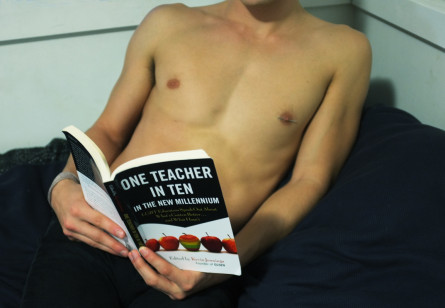
I’m sitting in a Chelsea coffee shop crying. My Tinder date is late, I just got a mediocre haircut, and it’s raining, but I’m on this bar-stool sipping a late afternoon cappuccino with tears of pride running down my face. I’m reading One Teacher In Ten In the New Millennium and feeling like a real queen.
OTITITNM has been around for a while, but she just got reset for the millennials. Kevin Jennings, founder of GLSEN, has edited together an updated and expanded collection of autobiographical coming-out stories from gay, queer, and trans educators around the world. Each chapter follows a different teacher as they weigh the burden of invisibility against the dangers of honesty in their decision to do what’s best for students, colleagues, and most importantly, themselves. Why do students need to know a teachers’ sexuality? What does queerness have to do with curriculum? Where are the intersections of race, gender, and sexuality in the classroom? This book begins to answer some of those increasingly complex questions.
“Voices largely absent from the first two editions — including transgender people, people of color, teachers working in rural districts, and educators from outside the United States — feature prominently in this new collection, providing a fuller and deeper understanding of the triumphs and challenges of being an LGBTQI teacher today.”
While we must remember those that remain silenced and without access to the resources that made these success stories possible, this book is a powerful read none the less. …

Tuesday 10.13.15
Jack Pierson’s Tomorrow’s Man 3
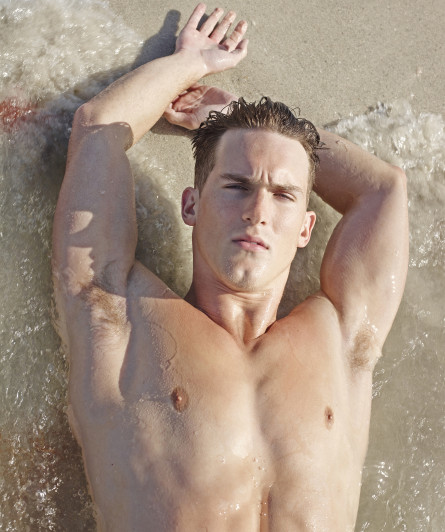
If you’ve heard us mention Tomorrow’s Man before, it’s because every issue is worth mentioning. Jack Pierson’s most recent release, Tomorrow’s Man 3, is no exception. Published under Bywater Bros. Editions, this hybrid book-zine-porno-photo-anthology continues to Let you Know. This edition layers the works of four distinct artists, Pierson, Peter Fend, Richard Tinker and Veralyn Behenna, to create a surprising narrative about the male figure, environmental justice, and the collision of graphic collage with organic form. “Woven into a poetic framework of connections, the resulting narrative takes the Tomorrow’s Man series into new terrain that combines the vernacular of classic photography with the urgent, geo-political narratives of Fend’s texts, and the psychedelic reverberations of Tinkler’s drawings…a sophisticated meditation on culture and nature.”
Pierson’s full color photographs are, as always, delicious. Shot in a range of naturally lit (often tropical) environments, he explores the male body with a playful precision that reveals without overwhelming — tastes without gorging. We get to see a range of bodies and bulges, all be them mostly white, that actually feel real. Fend, Tinker, and Behenna’s artistry energize the photographs with bold text and kaleidoscopic patterns, elevating them beyond their physical subject matter. Imagine: soaring naked into an exploding fractal. And there’s even a female voice in the book, Behenna’s short story slipped neatly into the center of your viewing experience. Intellectual jargon can’t quite sum it all up — the imagery speaks for itself.
Tomorrow’s Man 3 is available in 4 different lovely covers (pictured above) to chose from. …

Thursday 10.08.15
Luke Austin’s Beau Book
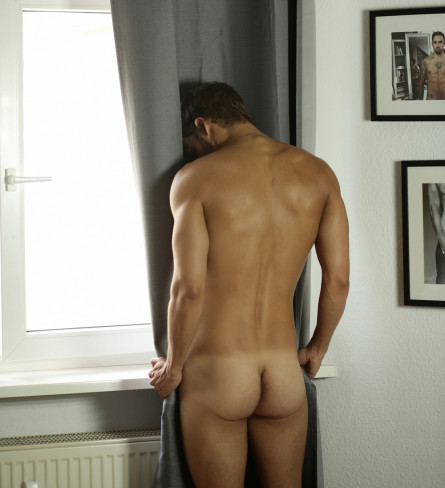
When I saw the cover of Beau Book, I knew there was something beautiful inside. Its author and Instagram celeb, Luke Austin, set out on a mission to photograph all the men he follows on his account — this collection is the handsome product of that endeavor.
Flipping through its pages, I found the beauty I expected: a stream of images unsurprisingly similar to my soft-core morning Instagram scroll. Swollen bulges and muscled bodies, softly lit, surrounded by fashionable mess or modern minimalism. It’s all beautiful. It’s called Beau Book. Can we say the word again?
But that seems to be as far as it goes: handsome men looking handsome sitting in bedrooms and playing on roofs; chiseled bodies and scruffy jawlines staring off camera. There’s cock and there’s booty and there’s even some gymnastics! My dick is thoroughly tingling, but my eyes are simply scanning. Each image is perfectly contained, their energy confined to the dimensions of their page. Maybe this is his intent — an echo of an artistic Instagram account, but it’s all a bit tidy for me.
I asked Austin a couple of questions to see what he had to say about it:
When did your Instagram career begin? I joined Instagram mid 2011, and by the end of 2012 I had 15k which was kinda crazy back then.
What allowed you to amass such a large social media audience? I think people started following me because of my self portraits. …

Tuesday 09.15.15
The Bathhouse Hornbook
A new zine written and illustrated by artist Michael Wynne
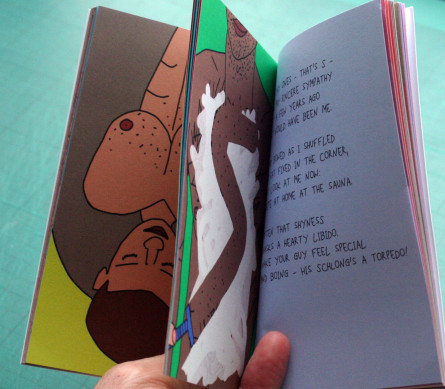
After a long day of work bestowed upon us from bosses or professors, all some of us want to do is curl up with a real good book. I know I am not alone when I say over the course of the workweek, I am expected to read a lot of nonsense, so when choosing my recreational reads, something like a fantastic zine is always first choice. Zines and art books alike are often witty, short, colorful, uncensored, thought-provoking, etcetera. Here is where I introduce Michael Wynne — “author of some books, maker of some cards and wrapping paper, lover of men.” See? Witty and short.
Wynne lives in London and has been creating zines for nearly three years now. His most recent, The Bathhouse Hornbook, will be launched at the New York Art Book Fair coming up this weekend, September 18-20. “The Bathhouse Hornbook is a light-hearted poetic introduction to men and their behaviour in the bathhouse. An A-Z of the people you’ll find and the things you can do in the sauna.”
“The story is built around a young man’s first visit to the sauna and his more experienced guide. Alongside 26 illustrations depicting the letters of the alphabet, the book aims to entertain and instruct, to take stock and to caution, to be mildly serious and boldly lighthearted.” — I’ve never been to a bathhouse so though I’m taking notes for my actual college courses, I’ll gladly take some bathhouse notes, and I suggest you do too. …

Tuesday 08.11.15
Matt Lambert’s KEIM
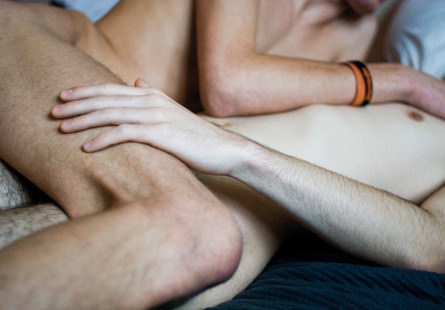
I can’t help but remember my shaking hand inching into my best friend’s sleeping bag, advancing with terror and ecstasy. Matt Lambert’s most recent “autobiographical archive,” KEIM, stands on that threshold that separates man and boy, firmly grounded in the contradictions that define “coming of age.” It is soft and hard, confident and self-conscious. Although entirely white, his collection of Berlin boys herein feels quintessentially real; Lambert captures an intimacy that strikes at the trembling heart of exploration, vulnerability, and sex. “It’s sex as a way to kill the boredom, the pain, the angst, the good times and the bad. It’s the normalisation of sex; normcore as opposed to hardcore. It’s the daily, repetitive ritualisation aided by the app or laptop where Grindr or camboys take you into an anonymous, anodyne, often synthetic world.”
The book contains a zine within the larger narrative, VITIUM CONTRA NATURAM, a momentary departure into the dark, insatiable hunger that boils beneath Lambert’s lighter images. Imagine “Wild child” inscribed on the head of a hard dick. There’s literally a picture of that. The book itself feels curious, pulling you in and pushing you back, teasing your limits. “Keim is a special kind of secret. It’s a book wrapped in whispers, gossip, innuendo, rumor, myth, mystique, mystery.”
We had the pleasure of asking Lambert a couple of questions about his process. Check it out:
How long have you been working on this book? How did it begin? …

Friday 06.26.15
Intimacy Idiot
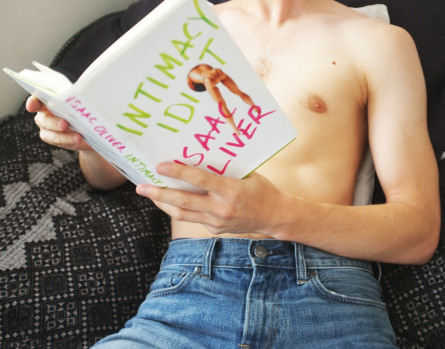
Isaac Oliver lives in fear of a home invasion: waking up to the unstoppable advances of a sadistic serial-killer’s padded pitiless steps in his Washington Heights apartment, a phobia which is the turnt up version of his ever-present fear of letting men in. This inability to experience vulnerability in a stable, relational way is the premise for Intimacy Idiot, the award winning playwrights debut book, which could have been just another amusing-but-cloying collection of young-Gay-NYC-single-male stories of sassy woe, but very much isn’t. Intimacy Idiot is unfailingly hilarious, until its small, pasty white hands suddenly summoned a strength I could not have known they had, collared me, gutted me, and left me for dead on my tweed tufted couch at 5 am like one of the psychopathic home invaders the author lives in fear of. I’m still fucked up about it.
Intimacy begins with Oliver’s satirical “online dating profile,” which is witty in a way that leads us to believe we are in for a chatty, boozy picnic, as opposed to a fully realized feast. His first proper chapter, “How I Didn’t Learn to Drive” gives a preview of the darkness of the book to come when, after ten pages of charmingly varied “New York observed” banter and keep-em-coming dick jokes with the zing of a decent midtown margarita, Oliver concludes the chapter on a tragic metaphor for his relational life so powerful and chilling that it turns your stomach. You’re suddenly hooked because damn this faggot can write. …

Friday 04.03.15
The Last Boys
Barry Marré's first photo book

Barry Marré’s latest photo book, The Last Boys, is sensual; his portraits are just as much about the beautiful men as they are the shadows draped across their torsos, the colors of the wall, or the undies pooling on their thighs. It is not simply an exploration of Marré’s subjects, but of the relationship between photographer and model, atmosphere and objective.
While the handsomeness of his work is not easily overlooked, Marré’s dedication to the tensions between rawness and composure, strength and vulnerability, hints at a story behind each image. “Letting go is a striking motto for me. Exactly in those moments in between the postures my best images arise.”
But even if you’re not in it for the more subtle narratives, the images — as well as the boys — are simply stunning. Admire the light on his clavicle, or the green of his eyes, or just the texture of his foreskin, either way The Last Boys will leave you wanting more.

Saturday 03.07.15
Look Dick Look
A book that features 96 close-up dick pics
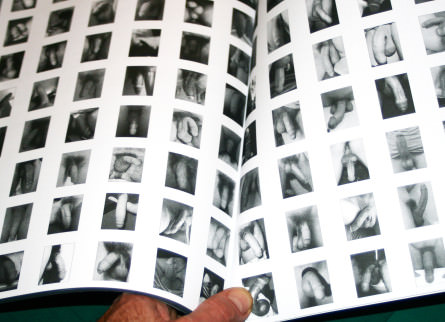
If cock is a spectrum, Michael Wynne’s Look Dick Look is the prism through which you can see its many hues. Published by Kiss and Tell Press, the book pairs intimate essays with 96 close-up dick pics; gritty black and white portraits offer a personal look at each member — every vein, wrinkle, and driblet comes into hard focus.
Wynne’s writing explores the places and practices of cock, guiding you through locale and fantasy alike: imagine how it’ll feel in your palm. The head, the slit, the shine, encased, unwrapped. From bathhouse to cubicle, terror to the sublime, his photographic mosaic of dick and prose lay bare the fleshy complexities of the cock.
Even if you’ve seen your share of dick, Look Dick Look walks a nuanced line somewhere between thrilling voyeurism and familiar memories of your favorite ex’s package. Take a peek; I’m sure you’ll see something you like.

Tuesday 02.10.15
Lines Camera Action: Hasse Persson’s Studio 54
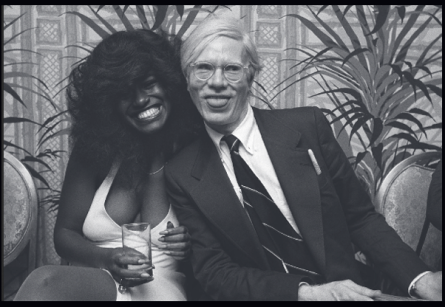
Swedish photographer, Hasse Persson’s latest photo anthology, Studio 54, published by Max Strom, chronicles the rise and fall of the legendary discotheque started by two gay entrepreneurs, Steve Rubell and Ian Schrager. Opened only for three years from ‘77 to ‘80 before getting shut down by the IRS, Tax authorities, and police raids, Studio 54 was doing something right. Populated by guests ranging from Warhol to Jagger to Capote, it was a hotbed of cosmopolitan chaos. Persson’s crisp, street-style photographs, captured using a secret recipe of flash and long exposure, pulse with the disco tracks spinning behind them.
A glance like this into a “hedonistic half-way-house between heaven and hell” is something to cherish; the queues to get in were so dense Frank Sinatra couldn’t even make it through the crowd to present his personal invitation, and Warhol had literal nightmares about getting rejected. Rubell, queen dictator of the door, accepted only a specific regiment of partygoers, a “tossed salad” of races, queers, and celebrities. Beyond the candid beauty of the images Persson presents, they are the skeleton key to a club you probably couldn’t get into.
His book is filled with energized black and white photographs, packed with scantily clad socialites and dazed celebs alike. The pictures whir with lights, masks, and glitter-smeared bodies stumbling down the avant-garde rabbit hole that was Studio 54.
…



